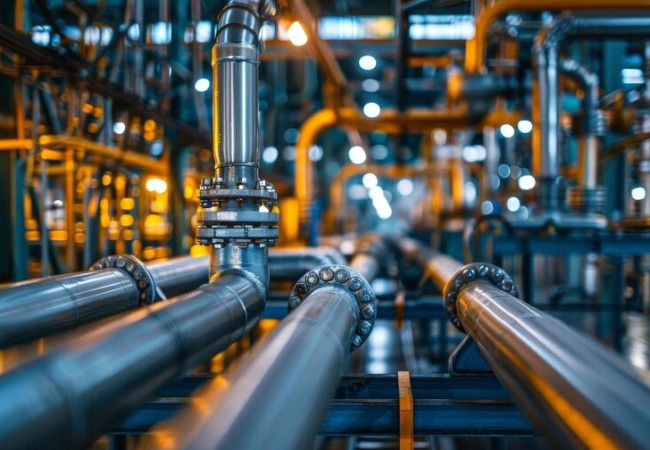Industrial rectifiers are indispensable in modern infrastructure, playing a pivotal role in powering a wide array of industries. By converting alternating current (AC) into direct current (DC), these devices enable the smooth operation of numerous critical systems. From manufacturing to transportation and energy, industrial rectifiers are the unsung heroes behind the scenes, ensuring reliability, efficiency, and safety. In this blog, we will explore the various applications of industrial rectifiers across different industries and understand how they contribute to powering critical infrastructure.
The Core Functionality of Industrial Rectifiers
At the heart of industrial rectifiers lies their ability to convert AC to DC. This is not just a simple electrical conversion; it is a process that demands precision and stability, especially in industrial settings where the stakes are high. Rectifiers achieve this conversion using semiconductor devices such as diodes and thyristors, which allow current to flow in only one direction. This unidirectional flow of current is what we know as DC, and it is essential for powering devices and systems that require a steady and consistent power supply.
Applications Across Key Industries
1.
Manufacturing
In the manufacturing sector, rectifiers are crucial for processes like electroplating, anodising, and welding. These processes require precise DC power to ensure consistent quality and efficiency. For example, in electroplating, a rectifier provides the controlled DC current necessary to deposit a metal layer onto a substrate. The stability of this DC output directly influences the uniformity of the electroplated layer, affecting both the aesthetic and functional qualities of the final product.
2. Transportation
The transportation industry, particularly railways and electric vehicles, relies heavily on rectifiers. In railways, rectifiers are used to power signalling systems, traction motors, and onboard electronics. The conversion of AC from the grid to DC is essential for charging batteries and powering the motors that drive electric trains and vehicles. By ensuring a stable DC supply, rectifiers contribute to the safe and efficient operation of transport systems, reducing the likelihood of disruptions and enhancing overall reliability.
3. Energy Sector
Rectifiers are integral to the energy sector, especially in renewable energy systems. Wind turbines and solar power plants generate AC, which needs to be converted to DC for storage in batteries. This stored energy can then be converted back to AC for distribution to the grid. The role of rectifiers in this process is crucial, as they enable the efficient storage and conversion of energy, thereby maximising the utilisation of renewable resources and supporting the transition to a more sustainable energy infrastructure.
4. Telecommunications
The telecommunications industry also benefits from industrial rectifiers, particularly in ensuring the reliable operation of communication networks. Telecommunication equipment often requires a stable DC supply, which is provided by rectifiers. These devices are critical in maintaining uninterrupted service, especially in remote or off-grid locations where reliable power is a challenge. By providing a steady DC output, rectifiers ensure that communication networks remain operational, even during power fluctuations or outages.
5. Marine and Offshore
In marine and offshore applications, rectifiers are used for cathodic protection, a method of preventing corrosion in metal structures such as ships, offshore platforms, and pipelines. By supplying a continuous DC current, rectifiers help to protect these structures from the harsh marine environment, extending their operational life and reducing maintenance costs. The reliability of rectifiers in these applications is paramount, as failures could lead to significant safety risks and financial losses.
The Advantages of Industrial Rectifiers
Industrial rectifiers offer several advantages that make them indispensable in powering critical infrastructure:
-
Reliability: Built to withstand harsh industrial environments, rectifiers are designed for long-term reliability, ensuring that critical systems remain operational without interruption.
-
Efficiency: Modern rectifiers are highly efficient, minimising energy loss during the conversion process and reducing overall energy consumption. This efficiency is particularly important in large-scale industrial operations, where energy costs can be substantial.
-
Precision: The ability to deliver a stable and precise DC output is essential for applications where even minor fluctuations in power supply can lead to significant issues. Rectifiers provide the necessary control to maintain optimal performance in these scenarios.
-
Scalability: Industrial rectifiers can be scaled to meet the needs of various applications, from small operations to large industrial plants. This flexibility allows them to be tailored to specific requirements, ensuring that they can support a wide range of industrial processes.
Conclusion
Industrial rectifiers are a cornerstone of modern infrastructure, powering critical systems across various industries. Their ability to convert AC to DC with precision and reliability makes them essential in ensuring the smooth operation of manufacturing processes, transportation systems, energy storage, telecommunications, and marine applications. As industries continue to evolve and the demand for reliable power solutions grows, the role of industrial rectifiers will only become more significant. By understanding their applications and advantages, companies can better harness the power of rectifiers to enhance their operations and support the development of critical infrastructure.
